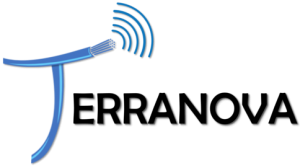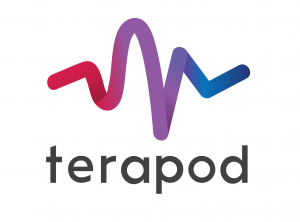
Several projects were funded in the H2020 call ICT-09-2017 “Networking research beyond 5G.” Although ThoR was funded in a later call, the topics are closely related and so ThoR has been added as a member. In 2020 Car2TERA was also added to the group. These projects are working together to share and disseminate information among themselves and to a wider audience. There will also be a range of events including workshops and conferences: please check the news feeds for details!
This presentation (given to the IEEE 802.15 THz Interest Group May-2018) gives a brief introduction to the cluster:
Introduction to the ICT-09-2017 cluster
In addition to ThoR the other cluster members are:
![]() Car2TERA
Car2TERA
Terahertz sensors and networks for next generation smart automotive electronic systems
The objective of Car2TERA is to develop emerging sub-THz (150-330 GHz) smart electronic systems based on latest semiconductor, microsystem and nanoelectronics technologies, and to implement TRL-4 demonstrators in two high-potential application scenarios.
 DREAM
DREAM
D-band Radio solution Enabling up to 100 Gbps reconfigurable Approach for Meshed beyond 5G networks
Through the exploitation of the radio spectrum in D-band (130-174.4 GHz) with beam steering functionality, DREAM will enable wireless links with data rates exceeding current V-band and E-band wireless backhaul solutions by at least a factor of ten and thus, it will bring wireless systems to the speed of optical systems. The DREAM project vision and objectives rely on a power efficient and silicon based BiCMOS transceiver analog front end, operating in D-band and enabling cost efficient deployment of meshed networks with seamless fiber performance. A beam steering integrated antenna array using an intelligent low-cost packaging technology prototype will be developed for the implementation of the beyond 5G network proof of concept in a realistic environment.
 EPIC
EPIC
Enabling Practical Wireless Tb/s Communications with Next Generation Channel Coding
EPIC aims to develop a new generation of Forward-Error-Correction (FEC) codes in a manner that will serve as a fundamental enabler of practicable beyond 5G wireless Tbps solutions. The project also aims to develop and utilize a disruptive FEC design allowing to advance state-of-the-art FEC schemes and to obtain the principal channel codes for beyond-5G (B5G) use-cases. The design framework developed within the project will offer new ways to conduct research and development and has the potential to affect the development of all future B5G communication systems.
 TERRANOVA
TERRANOVA
Terabit/s Wireless Connectivity by TeraHertz innovative technologies to deliver Optical Network Quality of Experience in Systems beyond 5G
TERRANOVA envisions to extend the fibre-optic systems’ Quality of Experience to wireless links by exploiting frequencies above 275 GHz. This means reliable connectivity at extremely high data rates in the Tbit/s regime and almost ‘zero-latency’ for networks beyond 5G. The consortium will employ breakthrough technology concepts, namely: the design of baseband signal processing for the complete optical and wireless link and the development of THz wireless frontends and their integration with photonic components. A network information theory framework, caching techniques, channel and interference models, all tailored to the particularities of the THz regime and extremely large bandwidths will achieve the successful co-design of components and network solutions.
 TERAPOD
TERAPOD
Terahertz-based ultra-high bandwidth wireless access networks
TERAPOD will investigate and demonstrate the feasibility of ultra-high bandwidth wireless access networks operating in the terahertz band. The project will focus on end-to-end demonstration of the THz wireless link within a data centre in a proof of concept deployment, while also investigating other use cases applicable to beyond 5G such as wireless personal area networks, wireless local area networks and high bandwidth broadcasting.
TU Braunschweig and Vivid are also partners in TERAPOD.
![]() ULTRAWAVE
ULTRAWAVE
Ultra capacity wireless layer beyond 100 GHz based on millimeter wave Traveling Wave Tubes
The ULTRAWAVE project is aimed at developing a high capacity backhaul that enables 5G cell densification by exploiting bands beyond 100 GHz. New travelling wave tubes delivering high power will allow the creation of an ultra capacity layer providing more than 100 Gbps per kilometer square in point-to-multi-point at D-band (141-174.8 GHz) fed by novel G-band (300 GHz) point-to-point high capacity links. The ULTRAWAVE system is empowered by the convergence of three main technologies: vacuum electronics, solid-state electronics and photonics. This ULTRAWAVE layer will enable backhaul of hundreds of small and pico cells, no matter the density, opening scenarios for new network paradigms aiming at a full 5G implementation.
WORTECS
Wireless Optical/Radio TErabit CommunicationS
WORTECS will explore Tbps capability of the spectrum above 90 GHz, combining radio and optical wireless technologies. The primary challenge of WORTECS is to propose scientific and technology advances for novel use of the spectrum, de-risking technological building blocks at frequencies above 90 GHz up to THz communications backed by innovative usage scenarios, for instance, virtual reality. It will also address visible light communications and develop radically new approaches for spectrum efficiency. WORTECS aims to offer: optical wireless communication and radio over 90 GHz Proof of Concept with several Gbps throughput: innovation on antenna, coding and heterogeneous wireless network studies with new architectures and protocols for routing, latency and caching.
